Unveiling the hidden treasures of Vatican City is an exhilarating journey into the heart of history and culture. In this article, we will delve into the enchanting world of the smallest sovereign state in the world and uncover 10 fascinating facts that will leave you in awe of its wonders. From its architectural marvels to its rich artistic heritage, Vatican City is a microcosm of beauty and intrigue. So, prepare to be captivated as we unravel the secrets of this extraordinary destination in [10 Fascinating Facts: Unraveling Vatican City’s Wonders].
Key Takeaways:
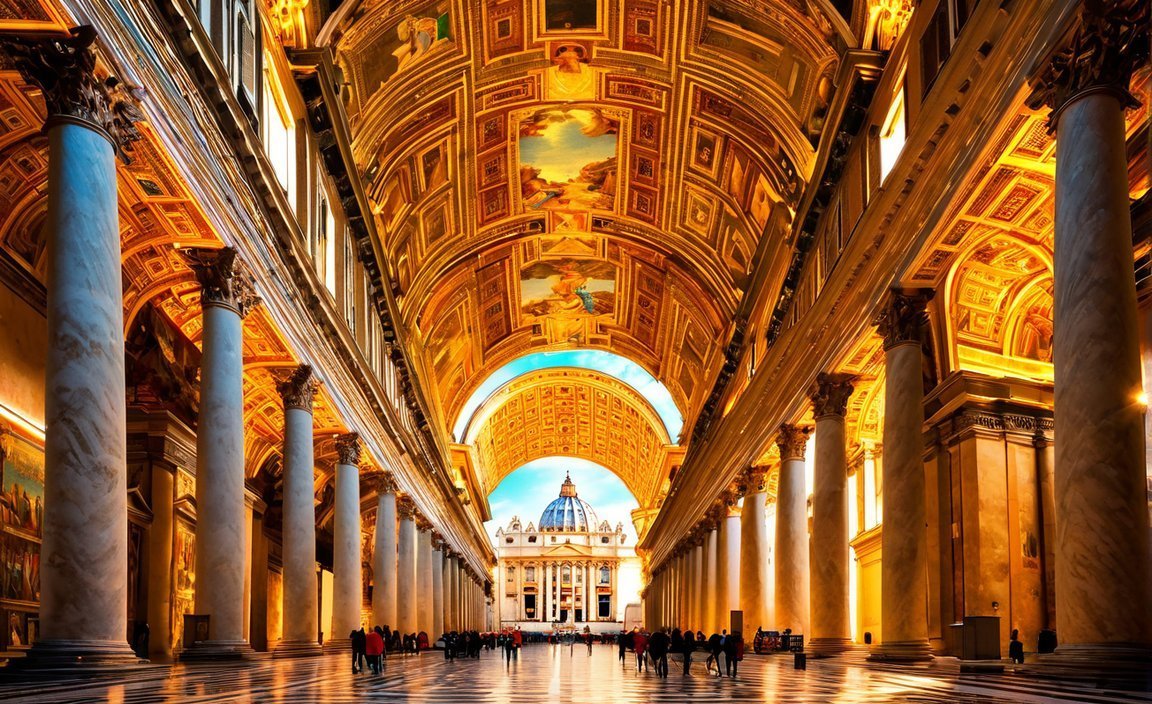
- Vatican City is the smallest country in the world, covering an area of only 0.44 square kilometers.
- The Vatican City has the shortest railway in the world, extending only 300 meters to connect with the rest of Italy.
- St. Peter’s Basilica, located in Vatican City, sits atop the ancient tomb of St. Peter and is considered the holiest site in Christendom.
- The Vatican City owns the Vatican Advanced Technology Telescope (VATT), located in Arizona, for astronomical research.
- The obelisk in St. Peter’s Square was captured by Caligula and transported to the Vatican, serving as a symbol for centuries.
- The Swiss Guard, known for their colorful uniforms, serves as the Pope’s personal army and provides security within Vatican City.
- Vatican City has citizens, including clergy members, Swiss Guards, and diplomats, but none are born within its borders.
- Vatican City is one of the few countries in the world without a prison facility.
- The city is surrounded by walls, built in the 9th century to protect it from invasions.
- The Museums at Vatican City house the largest art collection in the world, featuring masterpieces by renowned artists such as Michelangelo and Raphael.
10 Fun Facts About Vatican City
Vatican City, with its rich history and cultural significance, is a treasure trove of fascinating facts. Let’s dive into the lesser-known aspects of this tiny sovereign state and uncover 10 fun facts about Vatican City that will both entertain and educate.
1. The Smallest Country in the World
Vatican City proudly holds the title of the smallest country in the world. Covering an area of just 0.44 square kilometers, it is even smaller than some city parks! Nestled within the confines of Rome, Vatican City is a captivating blend of history, art, and spirituality. (source)
2. A Miniature Railway Connection
Despite its size, Vatican City boasts the shortest railway in the world. This diminutive railway stretches for a mere 300 meters and connects the Vatican with the rest of Italy. It may be short, but it serves as a symbol of connectivity between Vatican City and the outside world. (source)
3. St. Peter’s Basilica: A Holy Landmark
St. Peter’s Basilica, one of the most famous landmarks in Vatican City, stands atop the ancient tomb of St. Peter. Considered the holiest site in Christendom, this awe-inspiring basilica beautifully showcases the architectural prowess of the Renaissance period. It is an unmissable destination for pilgrims and art enthusiasts alike. (source)
4. Astronomy Meets Vatican City
Did you know that Vatican City owns a telescope located in Arizona? The Vatican Advanced Technology Telescope (VATT) allows astronomers to explore the wonders of the universe. This unique intersection of science and religion reflects the Vatican’s enduring curiosity about our cosmos. (source)
5. Ancient Obelisk Symbolism
The towering obelisk that graces St. Peter’s Square has a storied past. It was originally brought to Rome by Emperor Caligula and eventually found its way to the Vatican. This ancient Egyptian obelisk has stood as a symbol of the Vatican for centuries, adding a touch of historical mystique to the city. (source)
6. Swiss Guard: Defenders of the Vatican
Resplendent in their colorful uniforms, the Swiss Guard serves as the personal army of the Pope and is responsible for the security of Vatican City. These highly trained guards are not only a sight to behold but also embody the Vatican’s dedication to preserving its cultural heritage and protecting its sacred spaces. (source)
7. A Unique Blend of Citizens
While Vatican City may have citizens, it is interesting to note that none of them are born within its borders. The citizens primarily consist of clergy members, Swiss Guards, and diplomats. This unique demographic composition reflects the Vatican’s status as a distinctive entity with its own cultural ecosystem. (source)
8. No Place for Prison
Vatican City stands apart from the rest of the world in yet another aspect: it does not have a prison. Yes, you read that right! Remarkably, Vatican City is one of the few countries that lack a prison facility within its borders. One can only hope that the allure of Vatican City’s spiritual and artistic wonders keeps visitors on the right side of the law. (source)
9. A City Within Walls
To protect itself from invasions, Vatican City is enclosed by impressive walls that were constructed in the 9th century. These fortified walls serve as a tangible reminder of the Vatican’s storied past and its enduring commitment to safeguarding its treasures. Stepping into Vatican City feels like entering a sanctuary protected by time itself. (source)
10. Artistic Masterpieces Galore
Prepare to be astounded by the vast collection of artwork housed within the Museums at Vatican City. Boasting the largest art collection in the world, these museums are an art lover’s paradise. Marvel at masterpieces by legendary artists such as Michelangelo and Raphael as their works transport you to a realm of unparalleled creativity and beauty. (source)
Vatican City truly captivates with its compact allure, bridging the realms of religion, art, and history in an extraordinary display of human achievement. Delve into its rich tapestry, embrace the spirit of exploration, and let these 10 fun facts about Vatican City ignite your imagination.
Did you know that Indian Constitution has some fascinating fun facts? Discover 10 fun facts about the Indian Constitution and be amazed by its uniqueness and significance. 10 fun facts about Indian Constitution
Indianapolis is not just the capital city of Indiana, but it also boasts some intriguing fun facts! Dive into the world of Indianapolis and explore 10 fun facts that will leave you wanting to know more. 10 fun facts about Indianapolis
Ontario, Canada’s most populous province, is full of surprises. Uncover 10 fun facts about Ontario that will surely spark your curiosity and make you appreciate this stunning Canadian destination. 10 fun facts about Ontario
Quebec, known for its French roots and vibrant culture, holds many secrets. Delve into the wonders of Quebec and unearth 10 fun facts that will make you fall in love with this captivating province. 10 fun facts about Quebec
Toronto, the multicultural metropolis of Canada, has a lot more up its sleeve than meets the eye. Get ready to be amazed by 10 fun facts about Toronto that will make you see this bustling city in a whole new light. 10 fun facts about Toronto
The extraordinary art collections of the Vatican Museums
The Vatican Museums, located within Vatican City, are home to some of the world’s most extraordinary art collections. Let’s unravel the wonders of these remarkable museums:
1. Founded by Pope Julius II in the 16th century
- The Vatican Museums were established by Pope Julius II in the early 16th century. Since then, they have grown into a magnificent complex that showcases the artistic treasures of the Vatican City.
- Source: Headout
2. A vast complex of art and history
- Covering an area of over 55,000 square meters, the Vatican Museums consist of a sprawling network of galleries, apartments, and chapels. This expansive complex is a treasure trove of artistic and historical marvels.
- Source: Headout
3. One of Rome’s top tourist attractions
- With an average of 6 million visitors annually, the Vatican Museums are among the most popular tourist destinations in Rome. People from all over the world flock to witness the mesmerizing art and cultural heritage housed within these walls.
- Source: Headout
4. The iconic Sistine Chapel
- The Sistine Chapel, located within the Vatican Museums, is an artistic masterpiece in its own right. Renowned for its ceiling frescoes painted by Michelangelo between 1508 and 1512, it portrays scenes from the Book of Genesis and leaves visitors awe-struck.
- Source: Headout
- Source: The Roman Guy
5. A treasure trove of renowned artworks
- The Vatican Museums boast an unparalleled collection of famous artworks. Apart from the Sistine Chapel, visitors can marvel at Michelangelo’s “The Last Judgement” and explore other exquisite pieces such as the “Laocoön Group” sculpture, “St. Matthew” by Guido Reni, and the “Faun with the Infant Dionysius” sculpture.
- Source: The Roman Guy
6. St. Peter’s Basilica, a masterpiece itself
- Within Vatican City lies St. Peter’s Basilica, an architectural gem and a testament to the Vatican’s rich artistic heritage. It houses some of the most famous art pieces, including awe-inspiring sculptures, stunning mosaics, and breathtaking paintings.
- Source: The Art Newspaper
7. A legacy of artistic patronage
- The Vatican Museums comprise 26 museums and numerous galleries, displaying priceless art collections amassed by the popes since the 15th century. Their passionate pursuit of art and lavish patronage created a repository of unmatched masterpieces.
- Source: Britannica
8. The iconic Spiral Staircase
- At the entrance of the Vatican Museums stands the picturesque Spiral Staircase, designed by Giuseppe Momo in 1832. This world-renowned architectural marvel is not only captured in countless photographs but also serves as a fascinating entrance to the artistic wonders that lie beyond.
- Source: Rome and Vatican Pass
9. Art as a symbol of power and legacy
- The popes, with their immense wealth and influence, invested substantial sums of money in art, allowing the Vatican Museums to amass a collection that embodies their lasting legacy and the Church’s projection of power.
- Source: The Art Newspaper
10. A visual paradise of artistic expression
- Stepping into the Vatican Museums is like delving into a visual paradise. Every corner reveals the splendor of human creativity and the sheer breadth of artistic expression throughout history. It is a must-visit destination for art enthusiasts and cultural enthusiasts alike.
Key Takeaways:
– The Vatican Museums house an extraordinary collection of art and historical artifacts.
– The Sistine Chapel, with its ceiling frescoes by Michelangelo, is a highlight of these museums.
– St. Peter’s Basilica within Vatican City is a masterpiece in itself, showcasing magnificent sculptures, mosaics, and paintings.
– The Vatican Museums attract millions of visitors each year and are among Rome’s top tourist attractions.
– This vast complex of galleries, apartments, and chapels is a testament to the popes’ patronage of art and their desire to leave a lasting legacy.
– Other famous artworks in the Vatican Museums include “The Last Judgement” by Michelangelo and the “Laocoön Group” sculpture.
– The Spiral Staircase at the entrance of the Vatican Museums is an iconic architectural feature.
– The Vatican Museums offer a visual feast for art enthusiasts, providing a captivating journey through the history of artistic expression.
The Intriguing Sistine Chapel and Its Famous Frescoes
The Sistine Chapel is a truly captivating place, boasting a rich history and housing one of the world’s most renowned artistic masterpieces. Let’s dive into the fascinating world of the Sistine Chapel and explore its famous frescoes.
A Glimpse into History
- Named After Pope Sixtus IV: The Sistine Chapel was named after Pope Sixtus IV, who oversaw the rebuilding of the chapel.
- Venue for Papal Elections: Since 1492, the Sistine Chapel has been the host of the conclave, where cardinals gather to elect a new Pope.
Michelangelo’s Masterpieces
- The Ceiling Frescoes: The Sistine Chapel is renowned for its ceiling, which was painted by Michelangelo over the course of four years. It is a masterpiece of Renaissance art.
- The Last Judgment: One of the most significant frescoes adorning the walls of the Sistine Chapel is Michelangelo’s “The Last Judgment.” This powerful depiction depicts the second coming of Christ and the final judgment of souls.
Lesser-Known Facts
- Pre-Michelangelo Frescoes: Before Michelangelo’s work, the walls of the Sistine Chapel were decorated with frescoes by other artists, such as Botticelli and Perugino.
- Plain Exterior: Despite its ornate interior, the Sistine Chapel’s exterior is unremarkable and blends in with the other buildings in Vatican City.
- Epic Acoustics: The Sistine Chapel is known for its remarkable acoustics. The shape of the building allows for a beautiful resonance and enhances the experience of choral music.
Changing Traditions and Accessibility
- Historical Gender Barrier: Women were historically not allowed to enter the Sistine Chapel. However, this rule was abolished in modern times, and it is now accessible to all visitors.
- A Venue for Significant Events: Over the centuries, the Sistine Chapel has hosted various significant events, including papal inaugurations and important liturgical ceremonies.
Key Takeaways:
- The Sistine Chapel is a famous chapel located in Vatican City, named after Pope Sixtus IV.
- Michelangelo’s frescoes, including the iconic ceiling and “The Last Judgment,” are the highlights of the chapel.
- The Sistine Chapel has a plain exterior but houses remarkable artistic treasures inside.
- It has served as the venue for papal elections since 1492.
- The chapel exhibits remarkable acoustics and has been witness to significant historical events.
Sources:
– Sistine Chapel | History, Paintings, & Facts
– 7 Things You May Not Know About the Sistine Chapel
The Peculiar Swiss Guard: Protecting the Pope with Style
The Swiss Guard, with their distinctive uniforms and rich history, hold a special place within Vatican City. Let’s unravel the fascinating world of the Swiss Guard and explore their unique role in protecting the Pope.
1. Origins of an Elite Force
The Swiss Guards, established in 1506, are a military body of Swiss citizens serving as the personal army of the Pope within Vatican City. This formidable force was created through a treaty between the Pope and Swiss Cardinal Schinner, and their rich history spans over five centuries.
2. The Entrance Ritual
To become a member of the Swiss Guard, intense competition awaits candidates. Those who meet the strict requirements, including being single, practicing Catholics, and between the ages of 19 and 30, can apply. Successful recruits participate in a grand ceremony at Belvedere Court, where they swear their allegiance to the Pope.
3. Unwavering Dedication
The Swiss Guards are known for their unwavering commitment to duty. Clad in their vibrant blue, yellow, and red uniforms inspired by Renaissance fashion, they carry out both ceremonial and practical assignments within Vatican City. These dedicated individuals work diligently to ensure the safety and security of the Pope and the Apostolic Palace.
4. Armed with Tradition
The Swiss Guards are not just any ordinary security force. They are armed with Swiss military weapons, such as the traditional halberd, a ceremonial polearm. This tradition dates back to their early days, and while the halberd may seem outdated, it symbolizes their historical role as protectors and defenders of the Pope.
5. The World’s Smallest Army
With only 130 members, the Swiss Guard is famously hailed as the world’s smallest army. However, their small numbers belie their significant role in safeguarding the Pope and Vatican City State. Their dedication and precision make them a force to be reckoned with.
6. A Military Tradition
The Pontifical Swiss Guard celebrates an astounding 515 years of service. This illustrious military tradition is a testament to their enduring commitment and loyalty to the papacy.
7. The Vatican’s Gatekeepers
The Swiss Guards stand as the gatekeepers of Vatican City, checking visitors and working closely with the Pope. Their role goes beyond mere security; they are essential to the smooth operation of Vatican City and contribute to its rich cultural heritage.
8. Wearing History on Their Sleeve
The Swiss Guard’s distinctive uniform is not just for show; it tells a story. The design, featuring a large ruff collar and colorful Renaissance-style clothing, pays homage to the guards’ historic role during the tumultuous Renaissance period.
9. A Symbol of Friendship
The Swiss Guards’ presence within Vatican City is more than just a military alliance; it symbolizes the long-standing friendship and alliance between Switzerland and the Holy See. This unique relationship adds depth and richness to the Swiss Guard’s role.
10. Evolving Roles
Throughout the centuries, the Swiss Guards have adapted and evolved to meet the changing needs of the Vatican. Today, they continue their mission as protectors of the Pope while embracing modern security measures.
Key Takeaways:
- The Swiss Guards, established in 1506, are a military body of Swiss citizens serving as the personal army of the Pope within Vatican City.
- Becoming a Swiss Guard is a highly competitive process, with recruits undergoing a grand entrance ritual at Belvedere Court.
- The Swiss Guards carry out both ceremonial and practical assignments, ensuring the safety and security of the Pope and the Apostolic Palace.
- Armed with Swiss military weapons, including the traditional halberd, the Swiss Guards uphold a rich tradition of protection and defense.
- With only 130 members, the Swiss Guard is known as the world’s smallest army, but their dedication is unmatched.
- The Swiss Guard’s unique uniform reflects their historical role and pays tribute to the rich Renaissance heritage.
- The Swiss Guards embody the enduring friendship and alliance between Switzerland and the Holy See.
- Their role is not limited to security; they play a crucial part in the smooth operation of Vatican City.
- The Swiss Guards have adapted over the centuries, embracing modern security measures while preserving their historic legacy.
Sources:
- Britannica – Swiss Guards | Overview, History, & Facts
- Aleteia – 7 Fascinating facts about the Swiss Guard
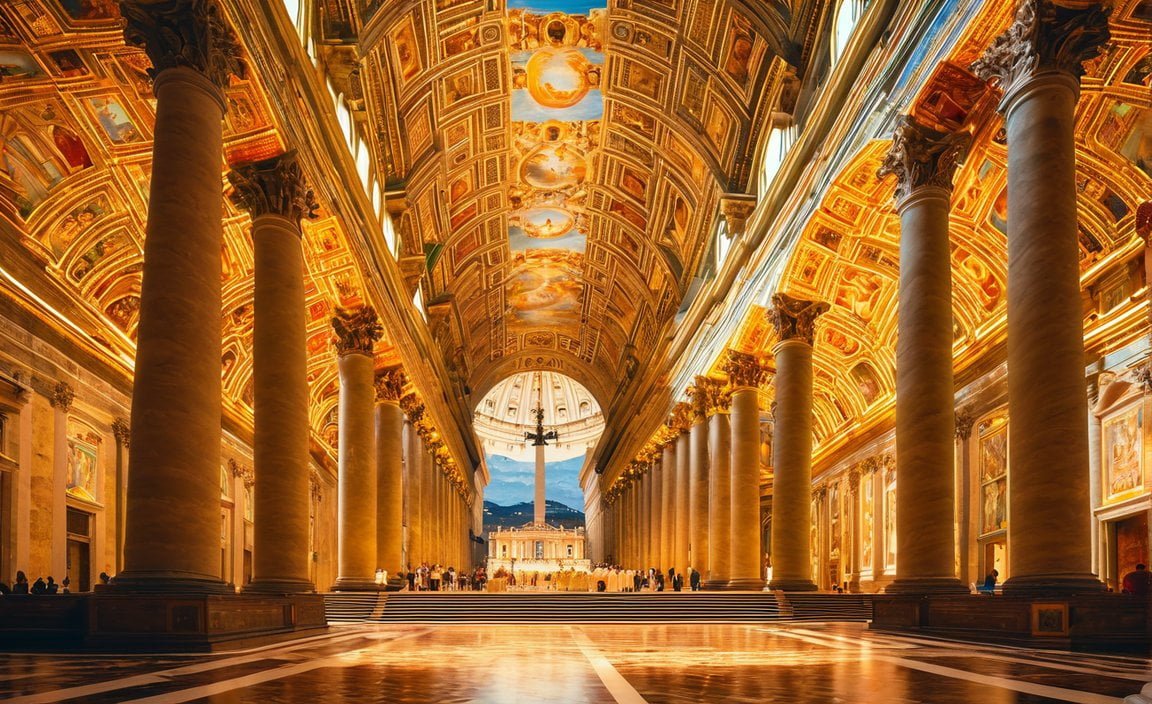
FAQ
Q1: Who founded the Vatican Museums?
A1: The Vatican Museums were founded by Pope Julius II in the early 16th century.
Q2: What is the total area covered by the Vatican Museums?
A2: The Vatican Museums occupy a vast complex of buildings covering an area of over 55,000 square meters.
Q3: How many visitors do the Vatican Museums attract annually?
A3: The Vatican Museums attract an average of 6 million visitors annually, making them one of the most popular tourist attractions in Rome.
Q4: What famous artworks can be found in the Vatican Museums?
A4: The Vatican Museums house a collection of priceless artworks, including the ceiling frescoes painted by Michelangelo in the Sistine Chapel, “The Last Judgement” by Michelangelo, the “Laocoön Group” sculpture, and “St. Matthew” by Guido Reni.
Q5: How many museums and galleries are there in the Vatican Museums?
A5: The Vatican Museums consist of 26 museums and numerous galleries, showcasing art collections that have been amassed by the popes since the 15th century.
- SYBAU See You Baby Meaning: Gen Z Slang Evolves - July 1, 2025
- Unlock Your Inner Youth: Lifestyle Secrets for a Vibrant Life - July 1, 2025
- Decode SYBAU Meaning: Gen Z Slang Explained - July 1, 2025
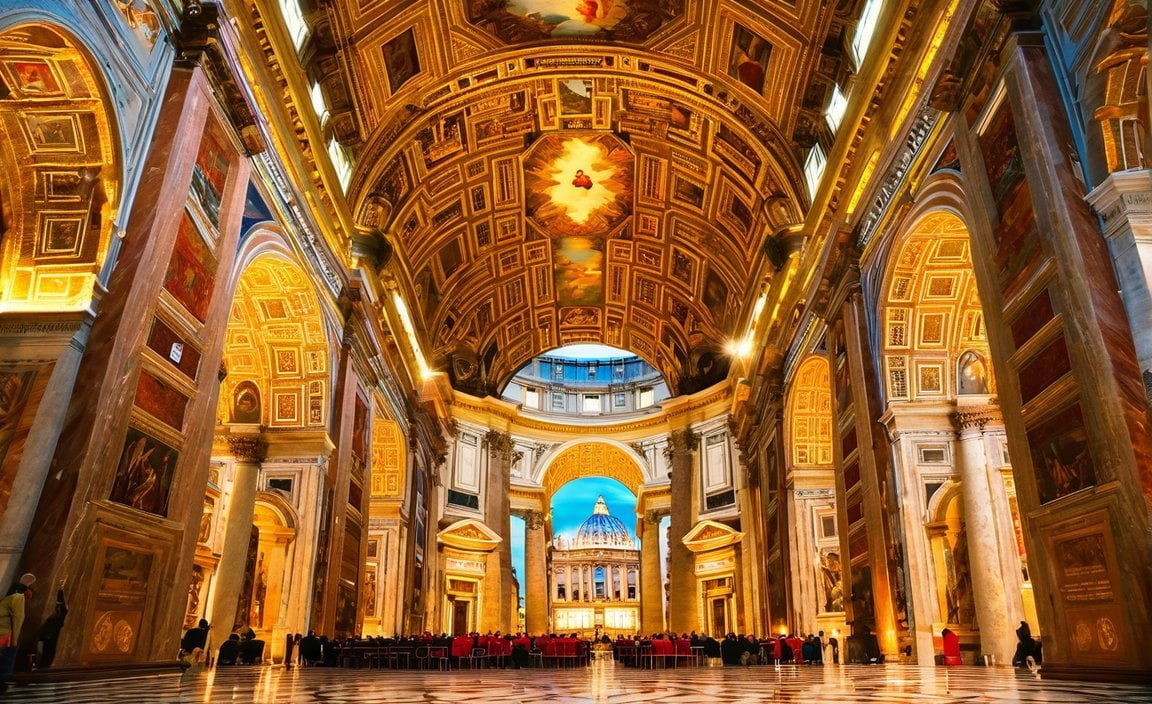
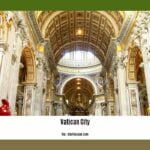
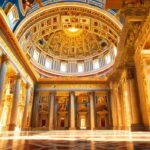


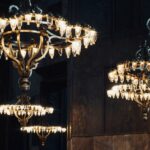
![Sightseeing the Scenic Marvels: Exploring [US State Beginning with S]'s Breathtaking Landscapes US-state-beginning-with-S_1](https://www.lolaapp.com/wp-content/uploads/2023/11/US-state-beginning-with-S_1-150x150.jpg)